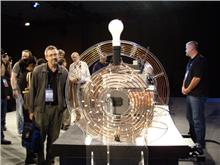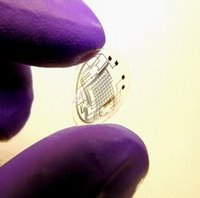Head Cheese Gone Wild
I was plenty pleased when little porridges of cultured neurons took their first baby steps towards running flight simulators or operating robots in the lab; I was downright smug when folks noticed that I'd got there first. Now, though, researchers from the Missouri University of Science and Technology are planning on putting head cheeses in charge of real-world power grids in half a dozen countries, including China and Mexico (but not including, interestingly enough, the United States). According to this article, "…these networks could control not only power systems, but also other complex systems, such as traffic-control systems or global financial networks."
Traffic control systems. Financial networks. Being run by meaty neuron networks whose thought processes are, by definition, opaque. For real.
I wrote a trilogy about just this scenario. It did not end well (just ask Kirkus). Maybe someone could pass a copy on to this Venayagamoorthy dude.
Next up, two papers in today's issue of Science: one on the evolution of religious belief, the other on the perception of imaginary patterns under conditions of perceived helplessness. These dovetail nicely with some slightly staler findings on the arrogance of stupid people, the inherent fear responses of political conservatives, and last night's competing North-American neocon/centrist debates. But I have to actually watch those debates before I blog on that. (I was out at Don Giovanni last night. I didn't even know that they had dry-ice smoke machines in 1787…)
Traffic control systems. Financial networks. Being run by meaty neuron networks whose thought processes are, by definition, opaque. For real.
I wrote a trilogy about just this scenario. It did not end well (just ask Kirkus). Maybe someone could pass a copy on to this Venayagamoorthy dude.
Next up, two papers in today's issue of Science: one on the evolution of religious belief, the other on the perception of imaginary patterns under conditions of perceived helplessness. These dovetail nicely with some slightly staler findings on the arrogance of stupid people, the inherent fear responses of political conservatives, and last night's competing North-American neocon/centrist debates. But I have to actually watch those debates before I blog on that. (I was out at Don Giovanni last night. I didn't even know that they had dry-ice smoke machines in 1787…)
Labels: AI/robotics, biotech, neuro, relevant tech












